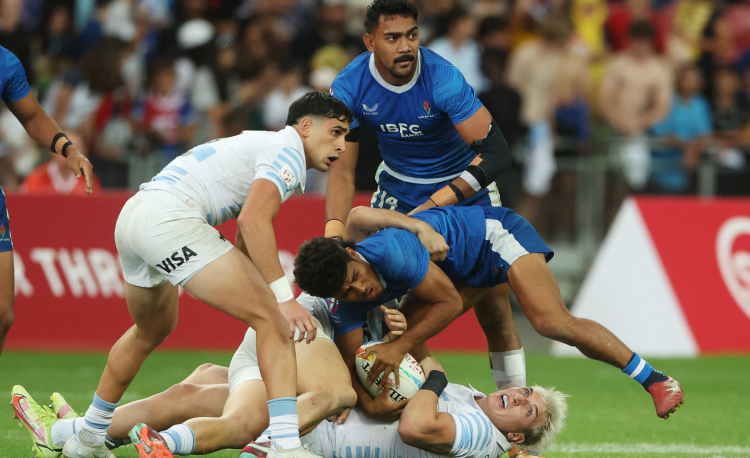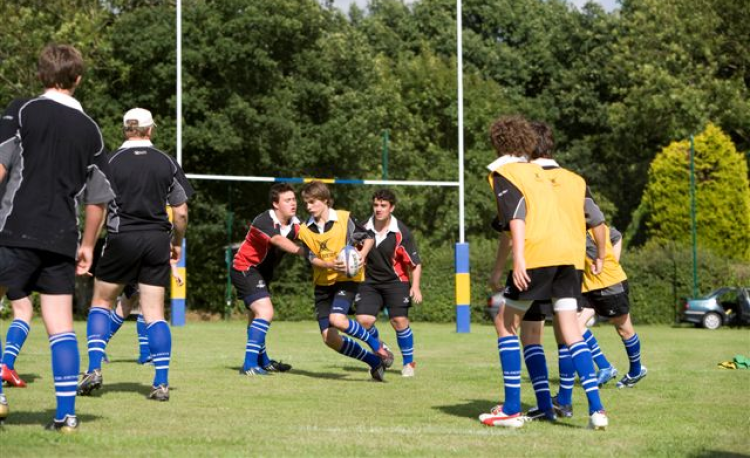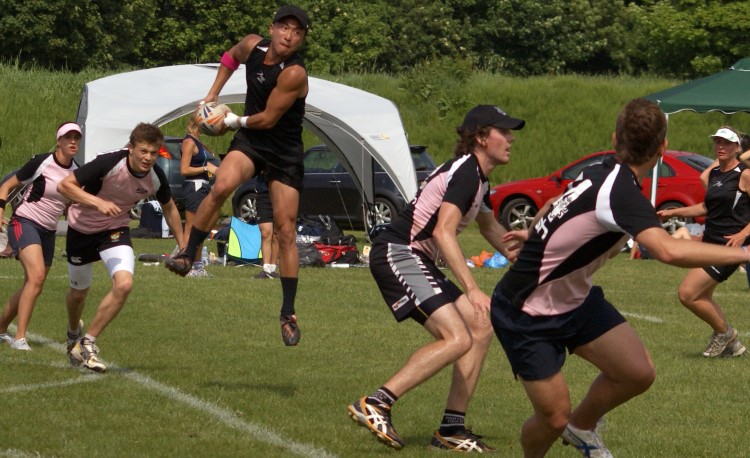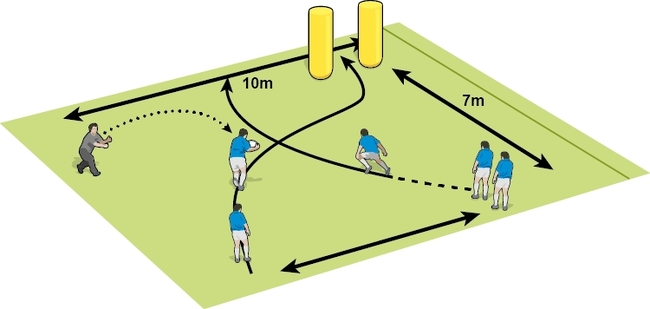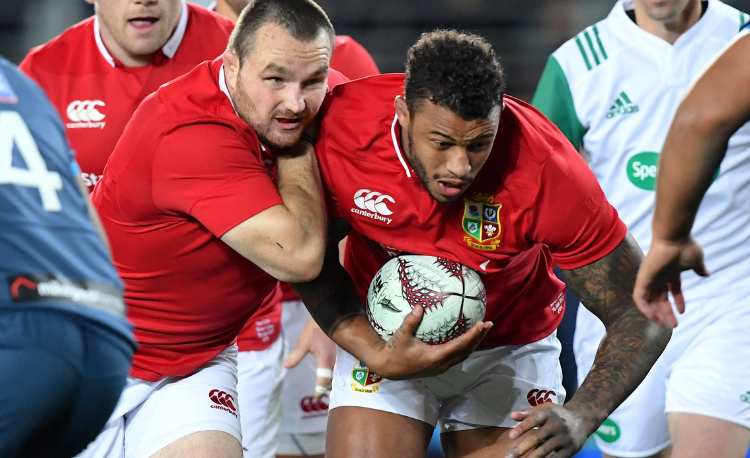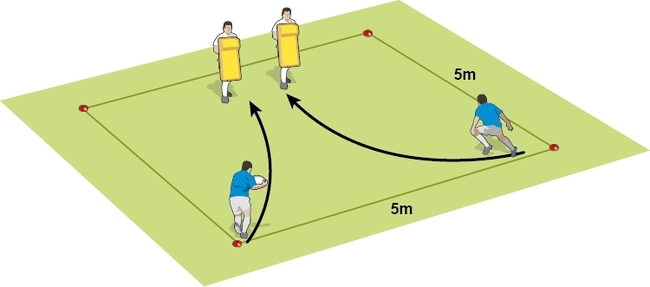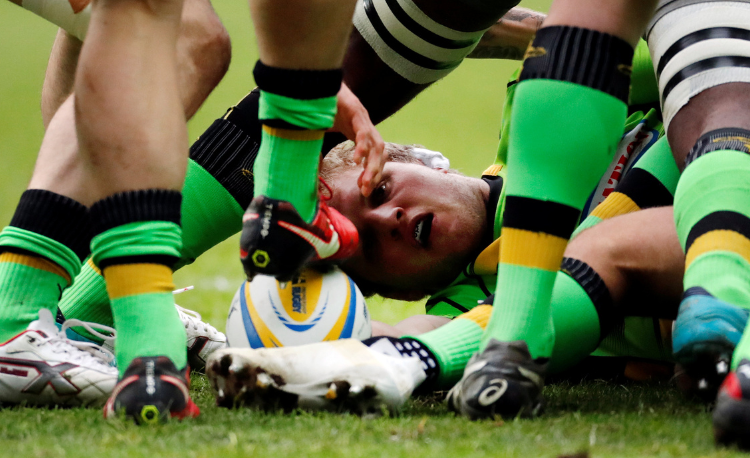My favourite games for sevens training, former England captain, Michaela Staniford
Touch Tag Sevensby Michaela Staniford
We use lots of games and game-related scenarios in training to develop our conditioning, skills and tactics. Here are my favourites when we prepared for the World Rugby Sevens Series...
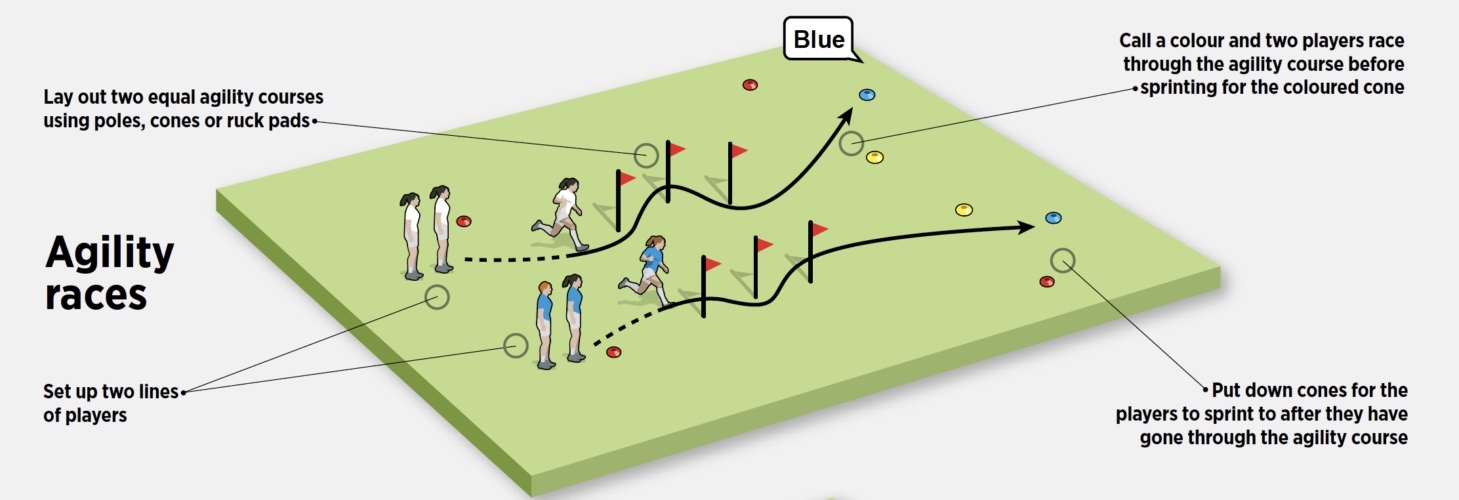
Our strength and conditioning coach, Lee Douglas, liked to make warm-ups competitive, which makes them fun to do and we certainly work harder. A good example is where we have two teams race against each other.
There’s lots of shouting and encouragement because each team and each player wants to win. They can be set up in a number of ways, but typically it starts with an agility element with the players weaving through poles or cones before a sprint finish.
Offload touch: when a player is touched, they have to offload the ball before there’s a second touch, otherwise it’s a turnover. In sevens, offloading is hard to defend against, so this game encourages good support and handling around the tackle area.
Drop-off touch: when the tackler makes a touch, they have to run back to their own try line before returning to the game. This gives us a conditioning element and also opens the space for attackers to exploit.
The size of the pitch can be varied, though we often play across the pitch, with different widths, like from the halfway line to the 22m line. The size of the pitch should big enough to allow teams to be successful and the game competitive, and you might have to change it to suit the players’ skills.
It should be a maximum of 8-a-side, because we want to closely replicate sevens. Most of the time, as a 20 player squad, we might be working with two sides playing (7 v 7) and one side (6) working on something else, like conditioning or a skill before swapping over.
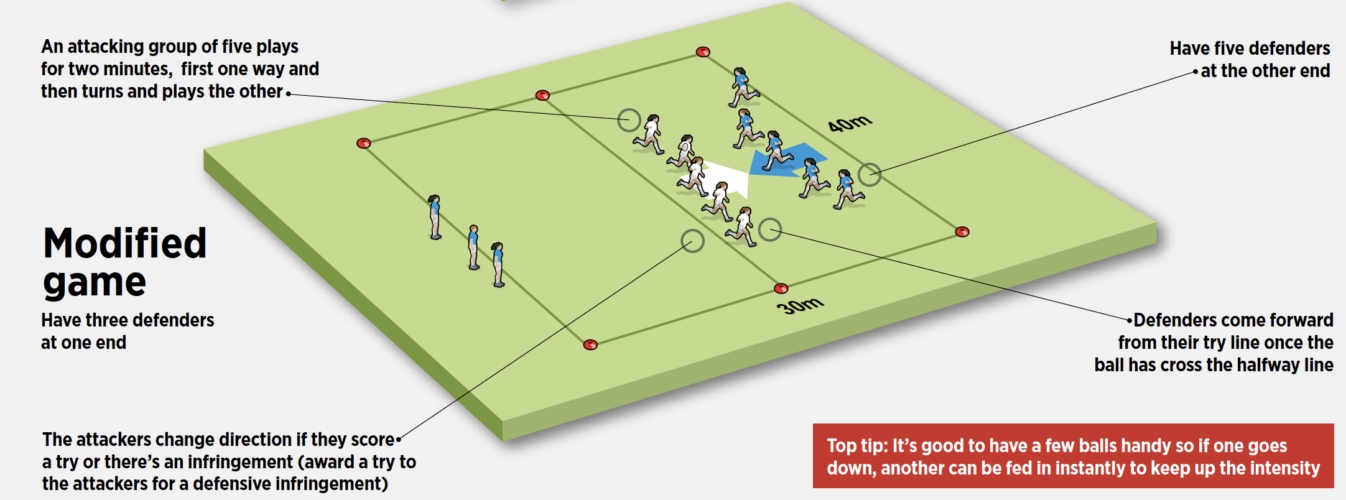
Inside an area of about a quarter of a pitch we might play a continuous game of contact rugby for up to two minutes.
An attacking group play against two defending groups, one at each end. They attack one way and if they score or the ball is lost, they turn and attack the other way.
At one end, the defensive numbers can match the attacking numbers, probably leading to more contact and play out of contact. At the other end, there are fewer defenders. Now, the emphasis is on attacking space.
AGILITY RACES

Our strength and conditioning coach, Lee Douglas, liked to make warm-ups competitive, which makes them fun to do and we certainly work harder. A good example is where we have two teams race against each other.
There’s lots of shouting and encouragement because each team and each player wants to win. They can be set up in a number of ways, but typically it starts with an agility element with the players weaving through poles or cones before a sprint finish.
TOUCH RUGBY
My two favourite versions of touch rugby for sevens are offload touch and drop-off touch.Offload touch: when a player is touched, they have to offload the ball before there’s a second touch, otherwise it’s a turnover. In sevens, offloading is hard to defend against, so this game encourages good support and handling around the tackle area.
Drop-off touch: when the tackler makes a touch, they have to run back to their own try line before returning to the game. This gives us a conditioning element and also opens the space for attackers to exploit.
The size of the pitch can be varied, though we often play across the pitch, with different widths, like from the halfway line to the 22m line. The size of the pitch should big enough to allow teams to be successful and the game competitive, and you might have to change it to suit the players’ skills.
It should be a maximum of 8-a-side, because we want to closely replicate sevens. Most of the time, as a 20 player squad, we might be working with two sides playing (7 v 7) and one side (6) working on something else, like conditioning or a skill before swapping over.
MODIFED GAMES

Inside an area of about a quarter of a pitch we might play a continuous game of contact rugby for up to two minutes.
An attacking group play against two defending groups, one at each end. They attack one way and if they score or the ball is lost, they turn and attack the other way.
At one end, the defensive numbers can match the attacking numbers, probably leading to more contact and play out of contact. At the other end, there are fewer defenders. Now, the emphasis is on attacking space.
Newsletter Sign Up
Coaches Testimonials

Gerald Kearney, Downtown Las Vegas Soccer Club

Paul Butler, Florida, USA

Rick Shields, Springboro, USA

Tony Green, Pierrefonds Titans, Quebec, Canada
Subscribe Today
Be a more effective, more successful rugby coach
In a recent survey 89% of subscribers said Rugby Coach Weekly makes them more confident, 91% said Rugby Coach Weekly makes them a more effective coach and 93% said Rugby Coach Weekly makes them more inspired.
Get Weekly Inspiration
All the latest techniques and approaches
Rugby Coach Weekly offers proven and easy to use rugby drills, coaching sessions, practice plans, small-sided games, warm-ups, training tips and advice.
We've been at the cutting edge of rugby coaching since we launched in 2005, creating resources for the grassroots youth coach, following best practice from around the world and insights from the professional game.



